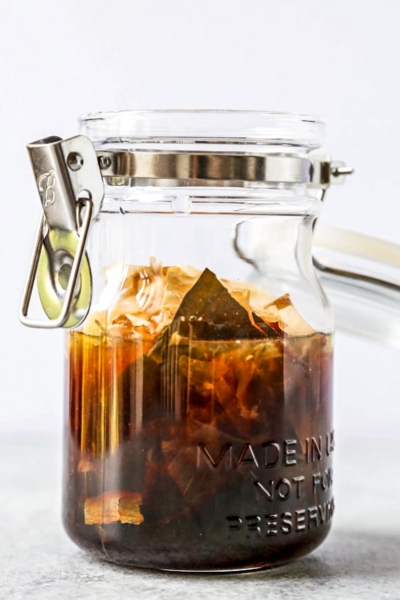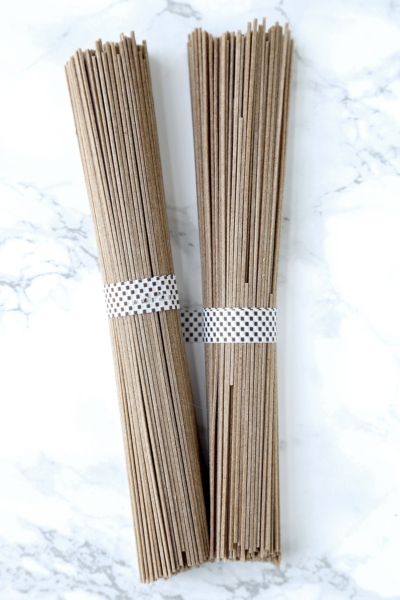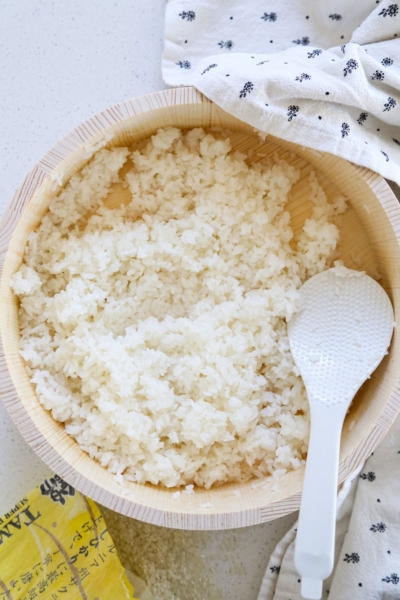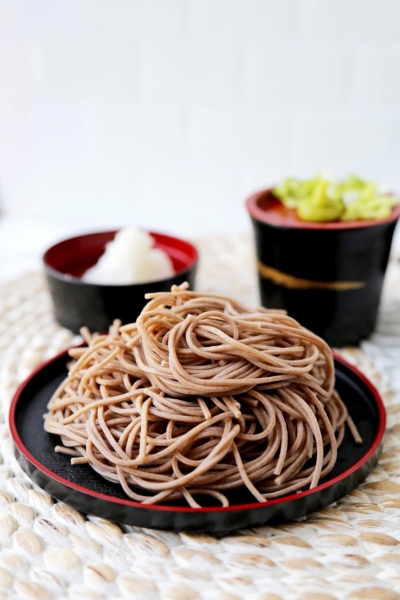Dashi is the delicate briny sea stock that lays the bedrock of umami in so many Japanese dishes. It’s a staple ingredient in Japanese cooking and one that’s very easy to make at home.
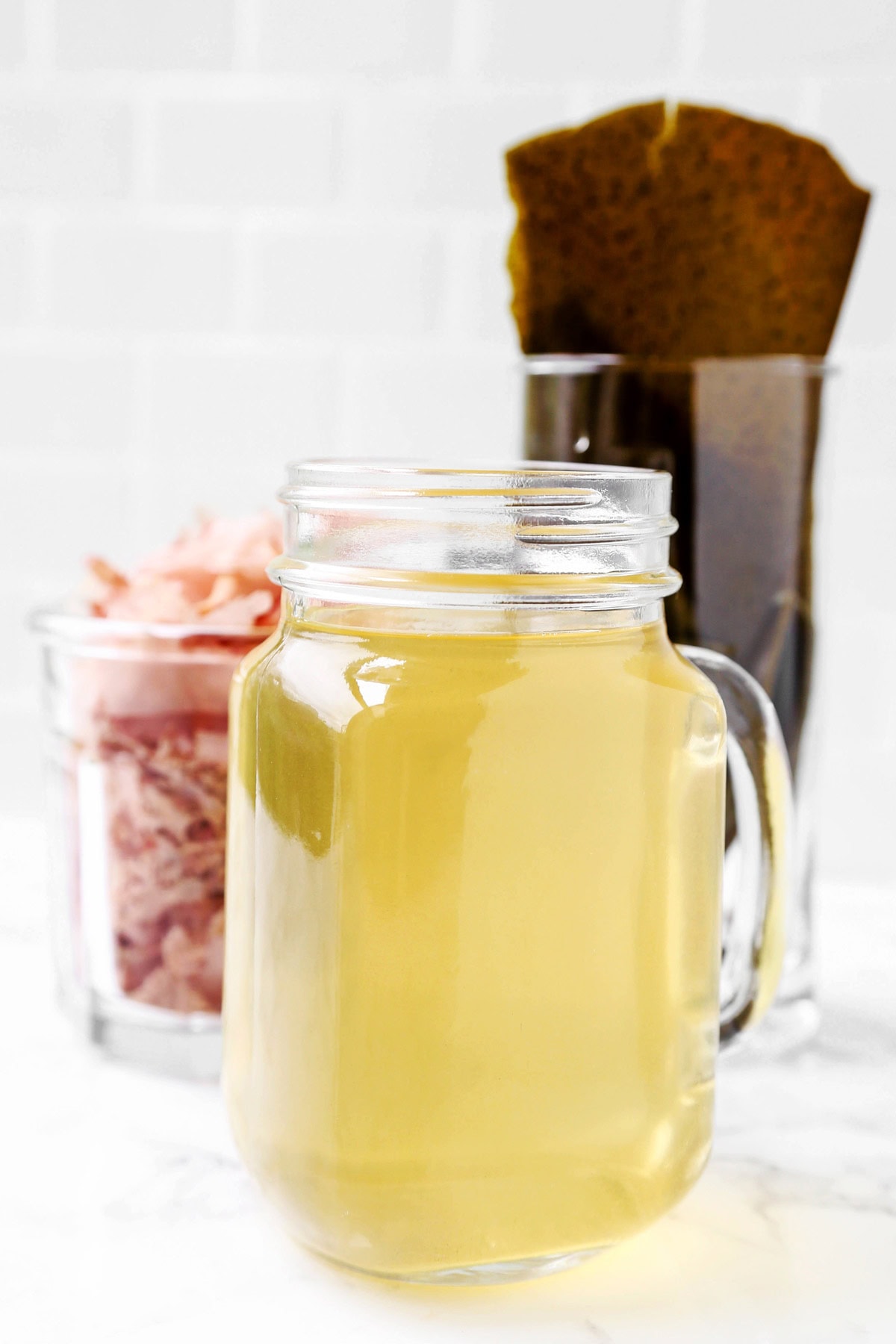
What is Dashi?
Dashi (出汁, だし), sometimes referred to as Japanese sea stock or Japanese soup stock, is an essential ingredient in Japanese cooking. This ubiquitous fish and seaweed broth is used in many washoku (和食 – Japanese cuisine) dishes such as ramen, miso soup, sunomono, and shabu shabu.
Dashi is used to enhance the flavor of a dish and is commonly paired with ingredients such as soy sauce, mirin, sake, and sugar. It’s a building block of flavor you’ll find at the heart of many of the Japanese classics you know and love.
While you’ll find many households relying on commercial dashi powder to save time, making it from scratch is actually very easy, and takes less than an hour to make.

Types of Dashi
There are many different types available but the most popular ones used in Japanese cooking are:
- Awase dashi. This is the classic broth that most of us are familiar with. It’s made with a combination of bonito flakes and kombu and has a nice balance of briny and umami.
- Iriko or niboshi dashi. This broth is made with baby sardines (anchovies) and has a fishier taste than other dashi stocks.
- Kombu dashi. Made with kelp, this broth is vegan and has a mild briny taste.
- Shiitake dashi. Made with shiitake mushrooms, this broth is packed with umami and earthy flavors. It’s also vegan.
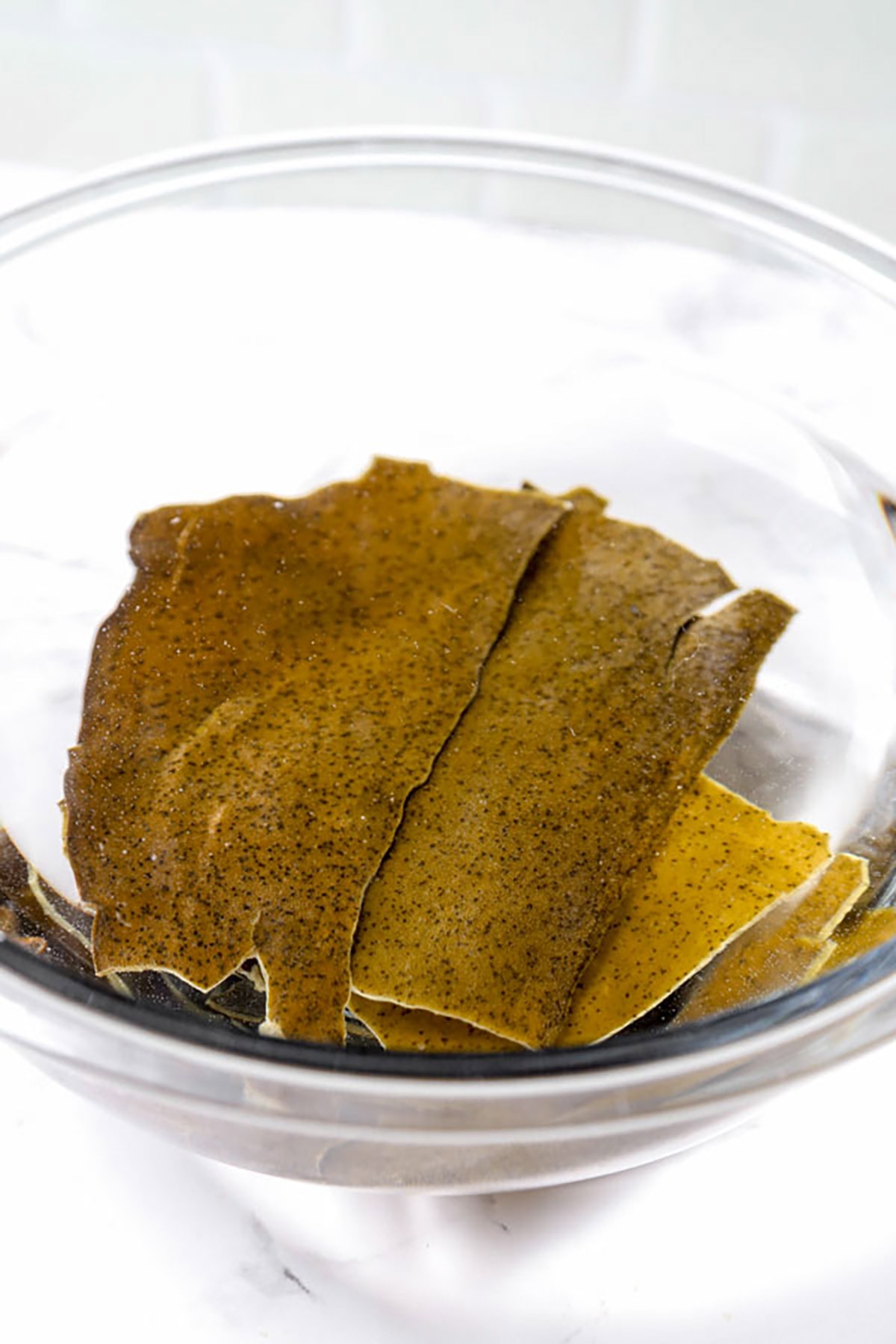
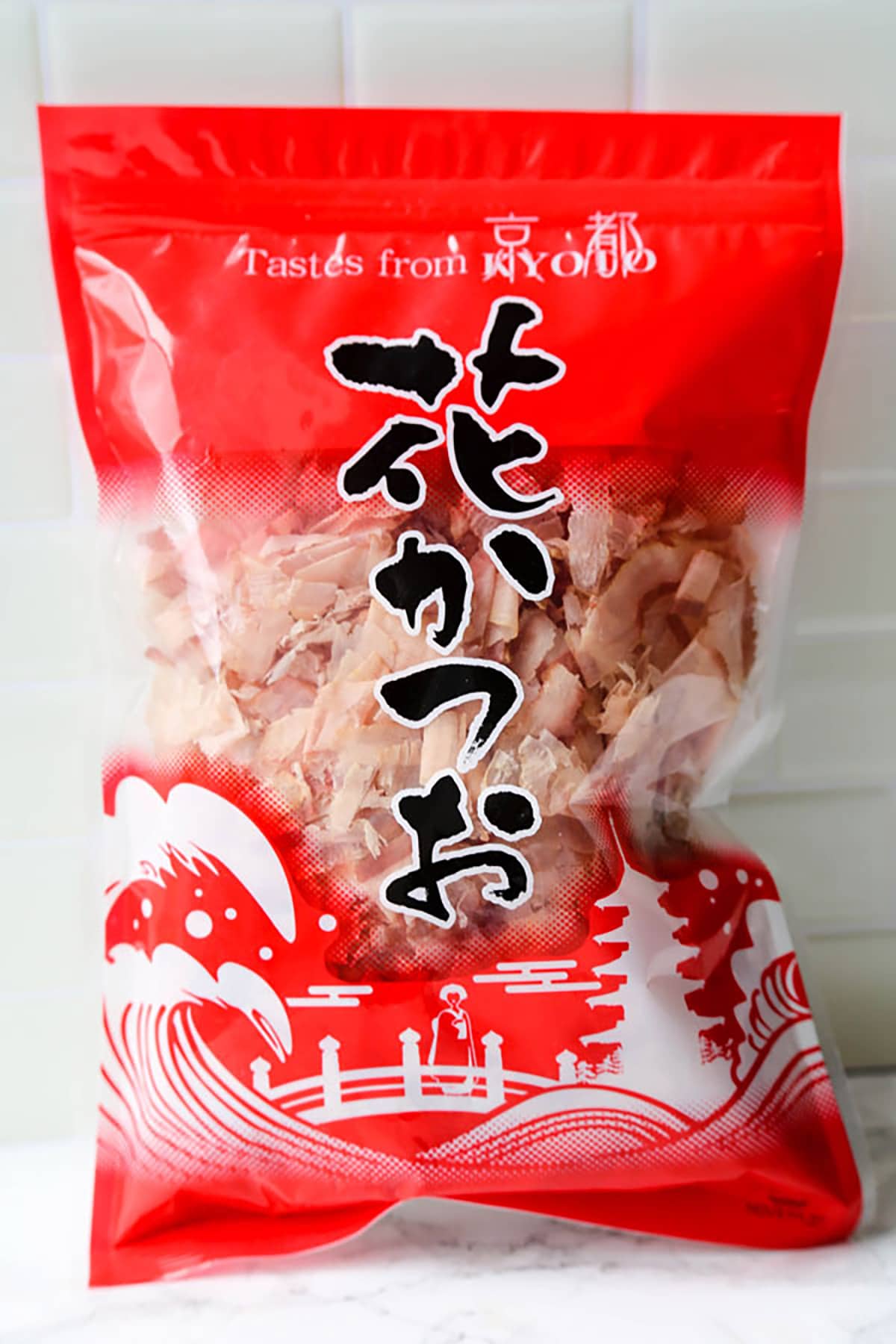
Dashi Ingredients
To make this traditional awase dashi (合わせだし) recipe, you will need three ingredients:
- Kombu: Kombu, also spelled konbu (昆布), is a type of edible seaweed that’s mostly harvested in the Hokkaido region of Japan, and some parts of Korean and China. Typically sold dry, kombu may also be used fresh along with sashimi or pickled in vinegar. It has a briny, metallic taste that is hard to substitute. It’s an essential pantry ingredients in East Asian cuisine, one that imparts a distinct flavor to many traditional and modern dishes. You will need 20 grams of kombu for this recipe.
- Bonito Flakes: Bonito flakes, called katsuobushi in Japanese, are the fish flakes you see dancing and swaying on top of Japanese salads and traditional dishes such as agedashi tofu and hiyayakko. Made of smoked bonito or skipjack tuna that has been fermented and dried in to blocks as hard as wood, the fish is then shaved in to mega-thin ribbons and packaged up. You will need 4 cups of bonito flakes for this dashi recipe.
- Water: You will need 6 cups of water for this recipe.
Where to Buy the Ingredients
Most Asian grocery stores will most likely be selling kelp, bonito flakes, or baby sardines. If not, a Korean or Japanese supermarket will definitely have those items for sale. Or you can also find them on Amazon here:
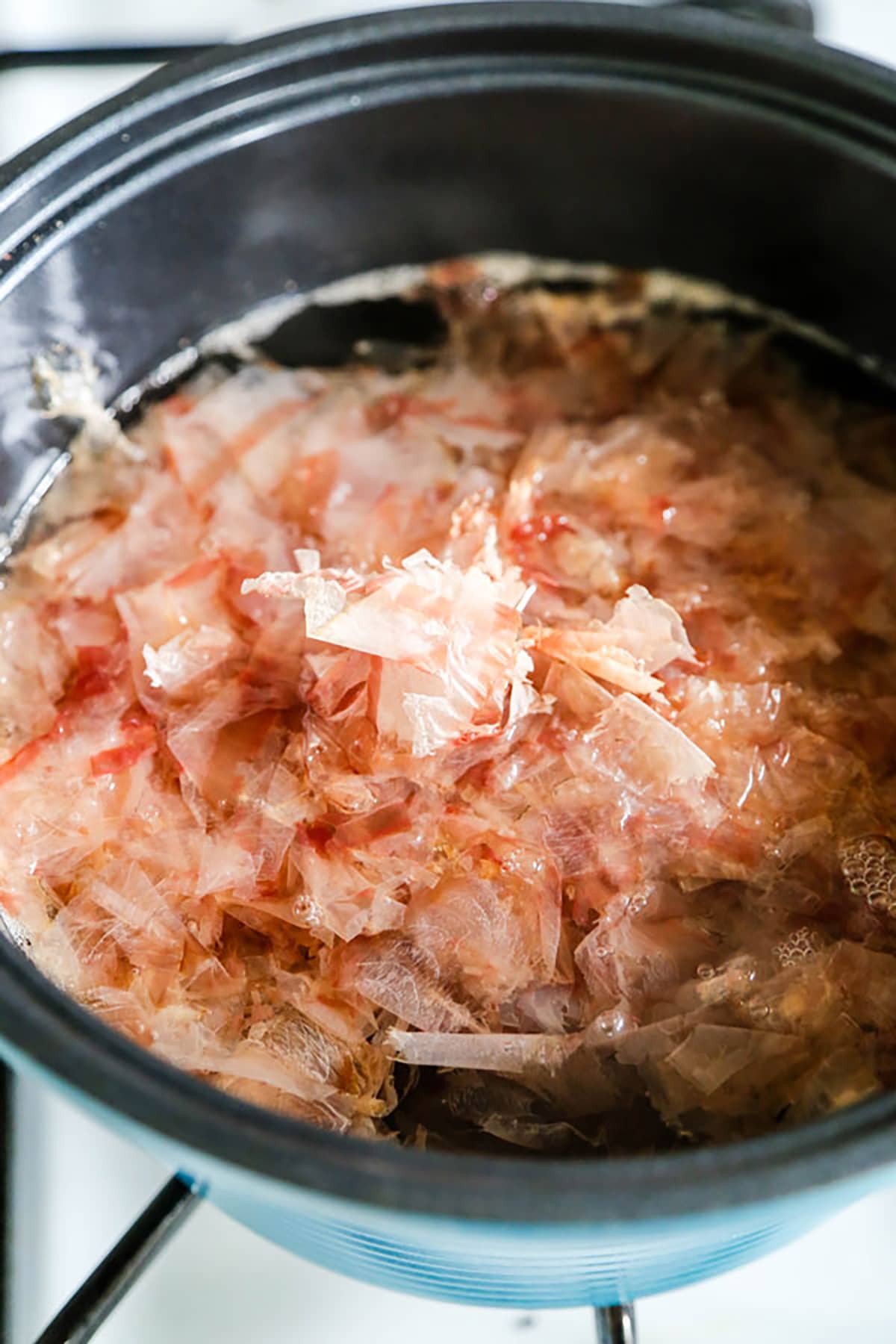
How To Make Dashi
- Place 20g of kombu in six cups of water in a stock pot at room temperature. Soak for at least 30 minutes, up to 3 hours for a stronger taste (I recommend 3 hours).
- Place the water and kombu in a pot and bring to a boil. Remove the kombu as soon as the water begins to boil to prevent the kombu getting slimy or too bitter in taste.
- Turn the heat off and add 4 cups of bonito flakes to the pot. Stir until all the flakes sink to the bottom of the pot. Turn the heat on again and bring to a boil. Once boiling, turn the heat to low and simmer for about five minutes. Make sure to skim off any foam that rises to the top of the liquid.
- Turn off the heat and allow the mixture to steep for about 15 minutes. This step is very important in order to let the flavor and umami really develop.
- Strain the broth through a sieve to remove the flakes. Transfer the dashi to a jar to use later (refrigerate if that’s the case), or use it immediately.
What To Do With Leftover Dashi Ingredients
Reusing bonito flakes
The best way to reuse bonito flakes is to use them in furikake. Furikake is extremely easy to make and can be used as a rice topping, for onigiri, and as a seasoning for pasta and other noodles dishes.
Reusing kombu
I learned this trick from my mother who hates to waste any food. Slice the kombu into strips and pan fry for a few minutes with a little sesame oil and soy sauce. I like to eat this as a side for rice or as a topping for udon or soba.

Kombu Dashi Recipe
Kombu dashi is often used in Japanese cuisine and is offered as an option for those on a vegan diet. If you are vegan and find yourself in Japan, it’s always a good idea to ask if they can accommodate your dietary preference by using kombu dashi. Many restaurants will have them, especially if you let them know ahead of time.
Ingredients
- Kombu (kelp)
- Water
How To Make Kombu Dashi
- Soak 40g of kelp (kombu) in 6 cups of water. Use cold or room temperature water.
- Let the kelp soak for a minimum of 30 minutes. I recommend soaking it for about 3 hours to get a stronger umami and mineral taste.
- Transfer the water and kombu to a pot and turn the heat to high. Remove the kelp as soon as the water comes to a boil but don’t throw it away. Turn the heat off and let the water cool to room temperature.
- Skim any remaining foam or leftover kelp bits with a small mesh strainer. The clearer and cleaner the dashi looks, the better it will taste.
- Transfer the vegan dashi to a jar or pitcher and refrigerate for up to 1 week. Or you can use it right away!
Kombu and Shiitake Dashi
If you are looking for a stock with more depth of flavor, I recommend adding a few dried shiitake mushrooms. Simply add 4 to 6 dried shiitake mushrooms and let them soak with the kombu and water for up to 3 hours.
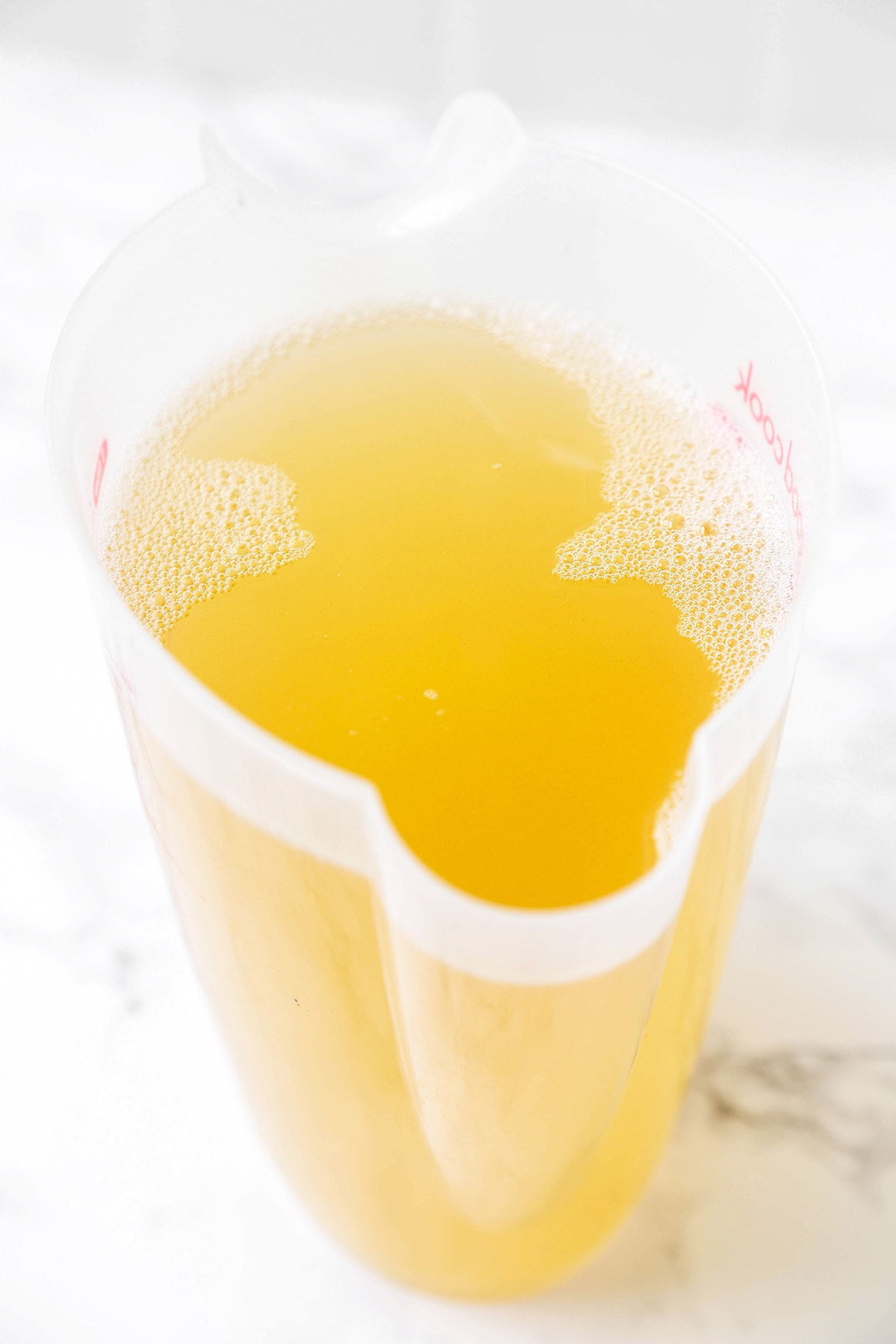
Frequently Asked Questions
Dashi is primarily used as a flavor enhancer, infusing umami and a briny element to dishes. In Japanese cooking, it’s often used in soups and stews, and dipping sauces (e.g.,tempura sauce and tsuyu). I recommend using dashi whenever you are looking to add a briny element to a dish. For example, adding a little dashi to a fish based stew or a paella would round up the flavors nicely. Or I like to add a couple of splashes when cooking vegetables to give them depth of flavor. Mixing a little dashi powder to a mayonnaise based dip or dressing also gives it a little extra oomph.
You can use a dash of soy sauce or shirodashi (white soy sauce) to impart flavors that are similar to dashi. The taste will not be the same but you will get the umami and slight saltiness.
I am all for a good dashi powder, I always keep some in my pantry. Dashi powder can be sold in little containers or bags. If it comes in a bag, chances are that it will be split into packets. It’s important to note that if the dashi you purchased comes in packets, it’s meant to be used that way. Just place the packet in water – one packet will probably be enough per 1½ to 2 cups of water – and boil it. Once you are happy with the taste, remove the packet. Otherwise, use about 1 teaspoon of dashi powder per cup of water.
Dashi is commonly sold in Japanese grocery stores in powder or concentrated liquid form. I have also seen the brand Hondashi (ほんだし) sold in Asian supermarkets and quite a few general supermarkets throughout the US. Finally, it can also be purchased on Amazon or other online retailers.
Yes, the brand is called Kanoya. Kanoya is a brand that hails from Kubara, a small village located in Kyushu, an island in southern Japan. It has been around since 1893 and offers high quality dashi powder (up to 30 different flavors). You can find some of their powders on Amazon, such as the bonito flakes, round herring, grilled ago & kombu one. Or, if you are planning a trip to Japan, make sure to stop by one of their stores. I always walk out with a bag full of dashi powder and recipes (each dashi comes with a recipe flyer)!
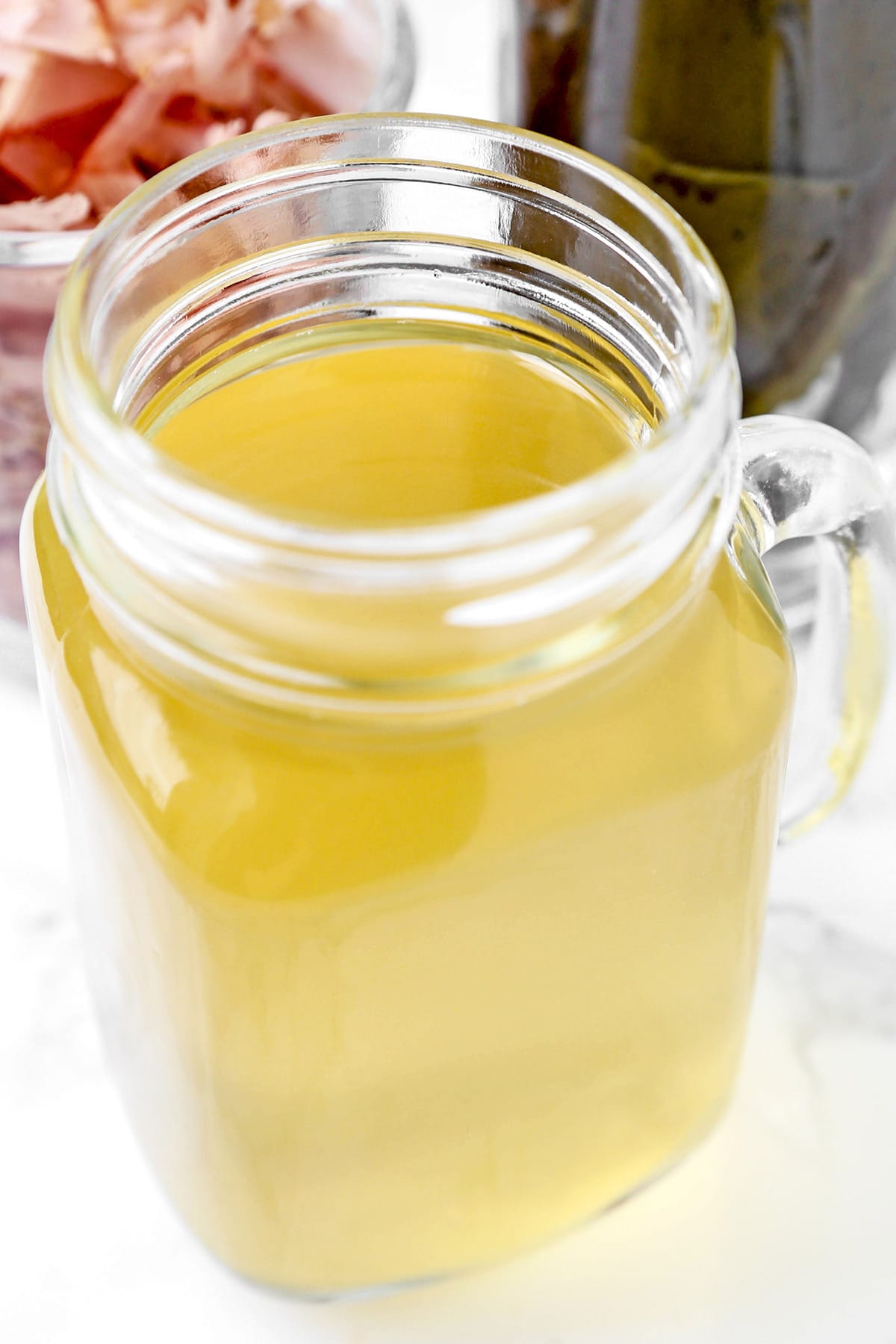
Storage
Fridge: Store dashi in a jar or airtight storage container. It will keep in the fridge for about 1 week.
Freezer: To make the dashi last longer, place it in a airtight bag or container, or split it into serving sizes before freezing. It should keep in the freezer for about 1 month.
Popular dashi based recipes:
- Kitsune udon
- Okonomiyaki
- Japanese egg drop soup (kakitamajiru)
- Yaki udon
- Tempura sauce
- Tofu vegetable soup
Subscribe to my newsletter and receive the latest recipes and weekly favorites straight to your inbox. Join me on Pinterest, Facebook, and Instagram for more cooking tips and adventures!
Did you like this tutorial? Are there variations in your own dashi recipe that you would like to share? Share your tips and recommendations in the comments section below!

How to Make Dashi
- Prep Time: 5 minutes
- Cook Time: 20 minutes
- Total Time: 55 minutes
- Yield: 6 Cups 1x
- Category: Soup
- Method: Boiling
- Cuisine: Japanese
Description
Impart Japanese flavors to your dishes with this easy homemade dashi recipe.
Ingredients
- 6 cups water
- 20 grams kombu (preserved kelp). For vegan dashi: Use 40 grams of kelp to infuse more kelp flavor since you won’t be using any bonito flakes.
- 4 cups katsuobushi (dried, shaved bonito flakes)
Instructions
- Add water and kombu to a stockpot and let kombu steep at room temperature for at least 30 minutes (you can soak the kombu for up to 6 hours if you have the time to wait).
- Place pot over medium heat and bring to a boil.
- Remove kombu right before water reaches full boil.
- Turn heat off and allow liquid to cool slightly (you can also add a tablespoon or two of cold water to cool quicker).
- Add bonito flakes and stir until mixed in. Bring liquid to a boil again (for vegan dashi: skip step 5,6, and 7).
- Once boiling, decrease the heat to low and lightly simmer for 5 minutes, skimming off any foam that rises to the top.
- Turn off heat and let steep for 10-15 minutes.
- Strain liquid through cheesecloth or a fine sieve to remove bonito flakes from the liquid (straining through a couple paper towels will work in a pinch).
- Use dashi immediately or store in the fridge for up to 1 week.
Notes
Freezing dashi: Freeze unused dashi in an airtight storage bag or container for up to 1 month.
Nutrition
- Serving Size: 1/2
- Calories: 11
- Sugar: 0 g
- Sodium: 266.3 mg
- Fat: 0 g
- Saturated Fat: 0 g
- Carbohydrates: 0.2 g
- Fiber: 0 g
- Protein: 2.4 g
- Cholesterol: 5.7 mg
